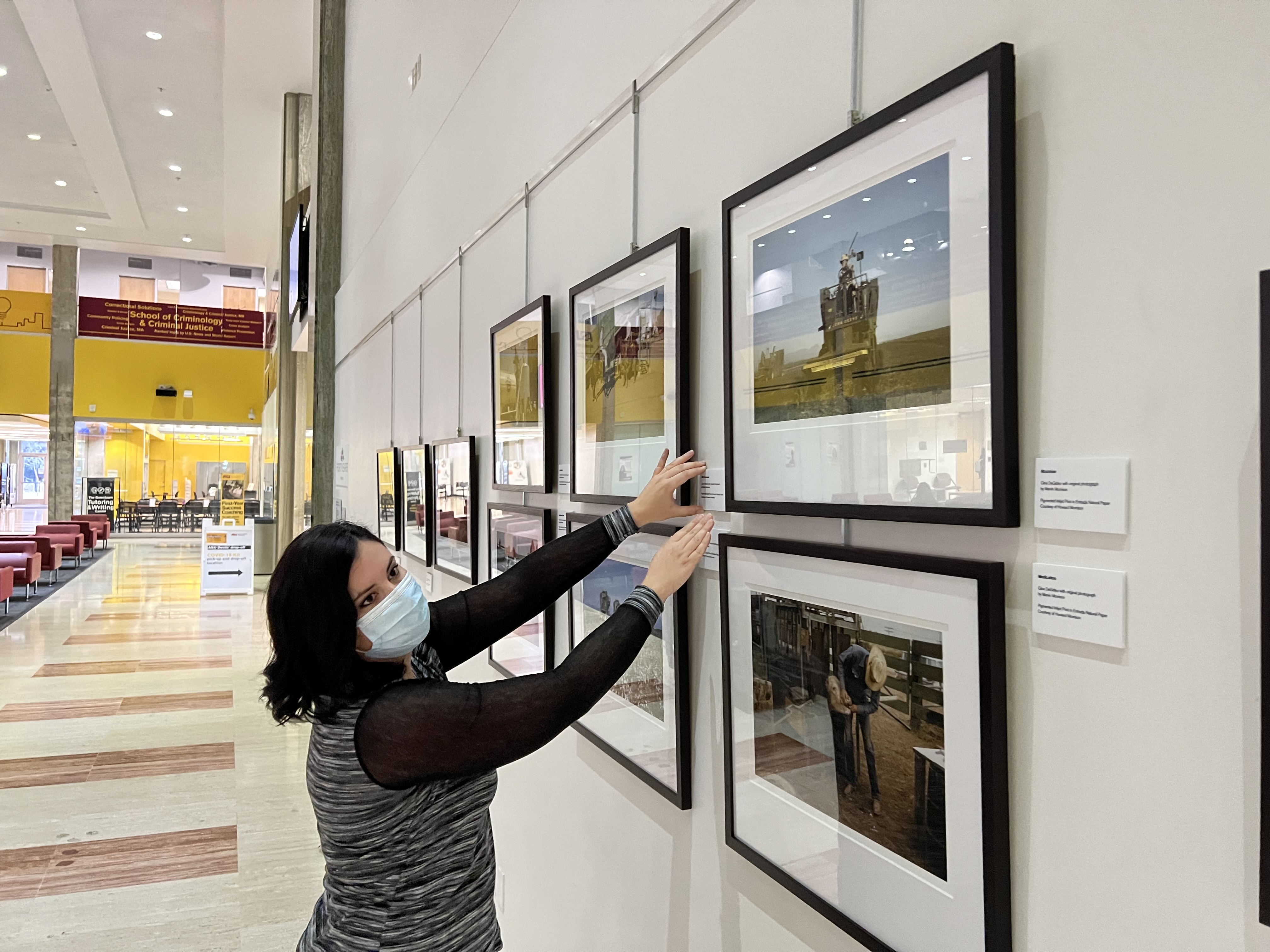Exhibition features farming, ranching legacy of Morrison Institute's namesake family
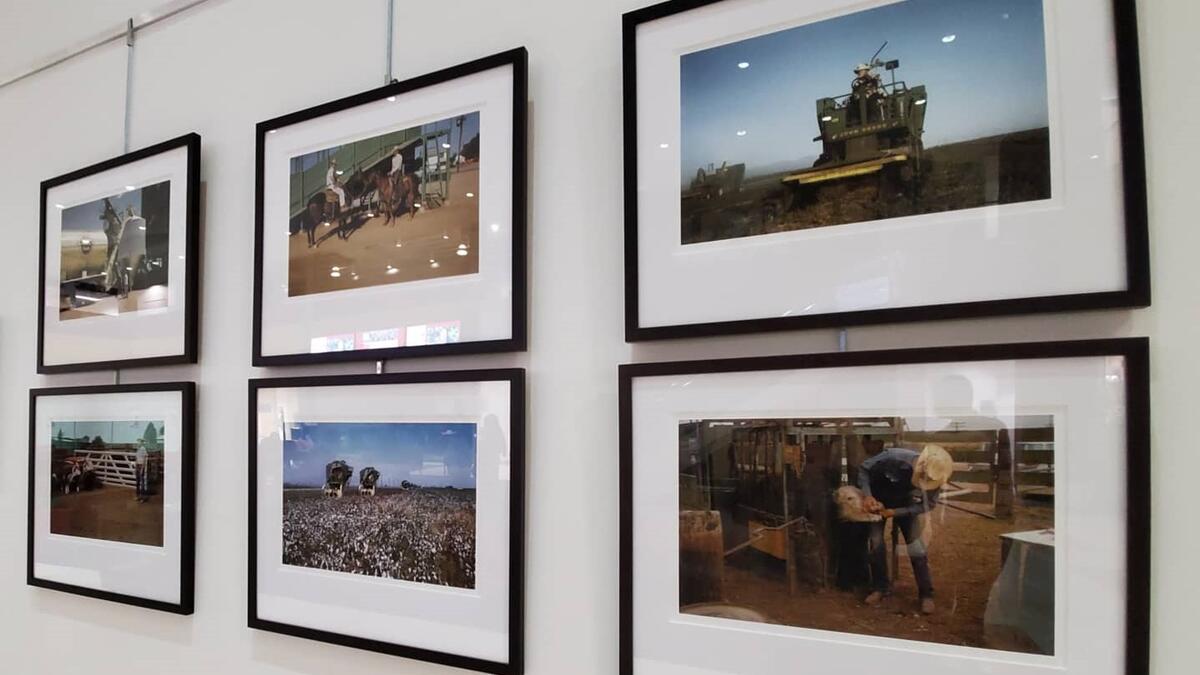
Several photographs by Marvin Morrison, a prominent member of the family that is the namesake of ASU's Morrison Institute for Public Policy, are on view in the University Center lobby on the Downtown Phoenix campus. Photo by Gina DeGideo
For most of eight decades, the Morrison family owned some of the largest tracts of real estate in Phoenix’s East Valley, totaling more than 3,000 acres.
The family’s farms within the boundaries of what is today the town of Gilbert yielded cotton, corn and alfalfa, and its ranch raised cattle and sheep. At one time, the family grazed cattle over more than 400 square miles of state and leased land stretching from Flagstaff to the Verde River.
A photography exhibition that recently opened in the University Center lobby on Arizona State University’s Downtown Phoenix campus tells a visual story of that land, which has been transformed from its original agricultural and livestock uses into a thriving Gilbert master-planned community called Morrison Ranch. The community lies in an area roughly bordered by Guadalupe, Greenfield, Warner and Sossaman roads.
For much of the time between the Morrisons’ original settlement in the area in the 1920s and today, Marvin Morrison’s photographs documented his family’s land’s rich history. They were taken between the 1940s and 1990s, a period of tremendous growth in the region.
Marvin passed away in 2007. More than a dozen of his photographs, each depicting a part of rural life in the East Valley that in many respects no longer exists, are on display at the University Center, 411 N. Central Ave., Phoenix.
ASU’s Morrison Institute for Public Policy, named for this influential and contributing family and based at the University Center within the ASU Watts College of Public Service and Community Solutions, is celebrating its 40th anniversary this year. Marvin, his wife, June, and son Richard were instrumental in founding the institute in 1982.
Richard Morrison is a faculty associate at the Sandra Day O’Connor College of Law and is an emeritus member of the institute’s board. He also is a recipient of the first-ever Sue Clark Johnson Leadership Award in 2016.
Several of Marvin’s photos, taken while he worked his family’s land and participated in local business, are included in a book commemorating the institute’s anniversary. The photos depict the difficult work done by farmers and ranchers, who wore Stetson hats and cowboy boots as they managed the land, as well as some of the tools and vehicles of the time.
A unique perspective as stewards of land
Morrison Institute Director Andrea Whitsett said the exhibition provides an understanding of the Morrison family to those who might be more familiar with the institute’s research portfolio, which in recent years has included a focus on child well-being, water policy and housing affordability.
The family’s unique perspective as stewards of land gave them insight into wanting a balanced and effective research institute not motivated by partisan agendas, she said.
“The exhibition provides an opportunity to more deeply appreciate the Morrisons’ incredible work ethic and their deep roots in the state — a dedication to Arizona that has manifested in a tradition of civic leadership and philanthropy,” Whitsett said. “Understanding the land has given them a unique perspective on how Arizona must carefully balance people, growth and stewardship of natural resources in its policymaking. They can see things from both a rural and urban point of view, and want the state as a whole to prosper.”
Mesa artist Gina DeGideo created the artwork in the exhibition, curating the images from hundreds of slides, negatives and prints from photos that Marvin Morrison had taken, and writing text to accompany several of them. An ASU alumna who earned her Bachelor of Fine Arts in 2012, DeGideo was introduced to the Morrison family while pursuing her studies.
“I was actually working with my own photography in a lot of the areas that were formerly the Morrison family farms for the landscape photography project I was doing for my BFA thesis,” DeGideo said.
At the time, DeGideo was an intern at a downtown Gilbert gallery and art laboratory space called Art Intersection that was close to the Morrisons’ land.
“That was the segue for me working with the Morrison family and Art Intersection to work with Marvin Morrison’s photographs,” she said.
Later, DeGideo became the gallery manager at Art Intersection and held that position for about seven years. She said its owner, Alan Fitzgerald, knew Marvin’s son Howard, who approached Fitzgerald and the gallery’s former curator with a large archive of his father’s photos and the idea to create a body of work from them.
The photos displayed today were originally exhibited at Art Intersection. About half of them include text that DeGideo wrote, based on her conversations with family members, that provide additional insights and perspectives.
'An interesting historical viewpoint'
Artist Gina DeGideo affixes label copy to an exhibition of photographs by Marvin Morrison of ranch and farm life in the Gilbert area from the 1940s to the 1990s, displayed in the University Center on the ASU Downtown Phoenix campus. ASU photo by Steve Kilar
DeGideo said she was familiar with the land the family owned, as she had lived in the area for several years, but didn’t know the stories behind the photos.
“Initially, all I knew was there was farmland turned into housing developments with white picket fences and tree-lined streets. That was something that, to me, an Arizona landscape photographer, was a bit foreign, which was what attracted me to that area,” DeGideo said. “After I met the family, it was really inspiring that they wanted to take control of their land’s future and develop it themselves. They created their own aesthetics with the space, and created a legacy for their family.”
DeGideo said the exhibition tells an important story of the state’s history in farming and agriculture, which is not perhaps the first thing many people think of when they think of modern-day Arizona.
“They ran cattle and cotton, alfalfa, all the things Arizona is a big producer of. It’s an interesting historical viewpoint,” she said.
The exhibition is expected to be on view through the fall 2022 semester.
More Arts, humanities and education
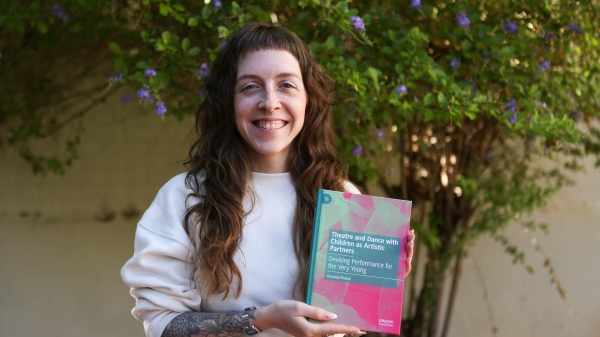
ASU professor explores theater, dance for young children in new book
Arizona State University Assistant Professor Amanda Pintore believes in the artistic capacity of very young children. She's…
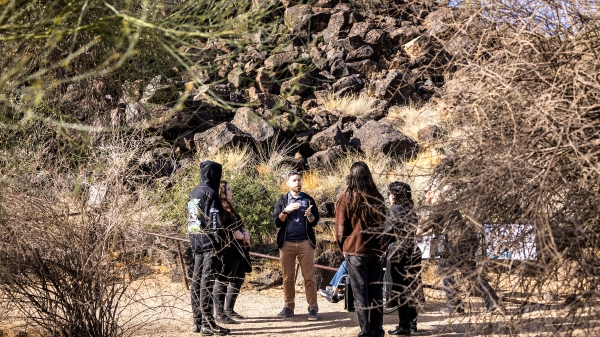
Petroglyph preserve celebrates 30th anniversary with ancient, modern tales
The Deer Valley Petroglyph Preserve provides a beautiful walk through a pristine desert where chuckwalla lizards are as plentiful…
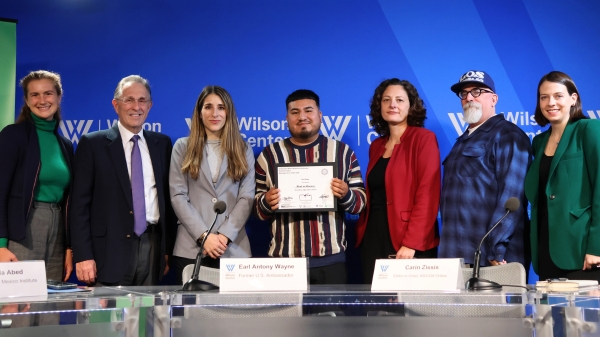
Kaleidoscope short film contest inspires powerful binational filmmaking in its second year
“We come to this country not to steal anybody’s jobs but to take advantage of the opportunities that the rest ignore. We’ve been…
